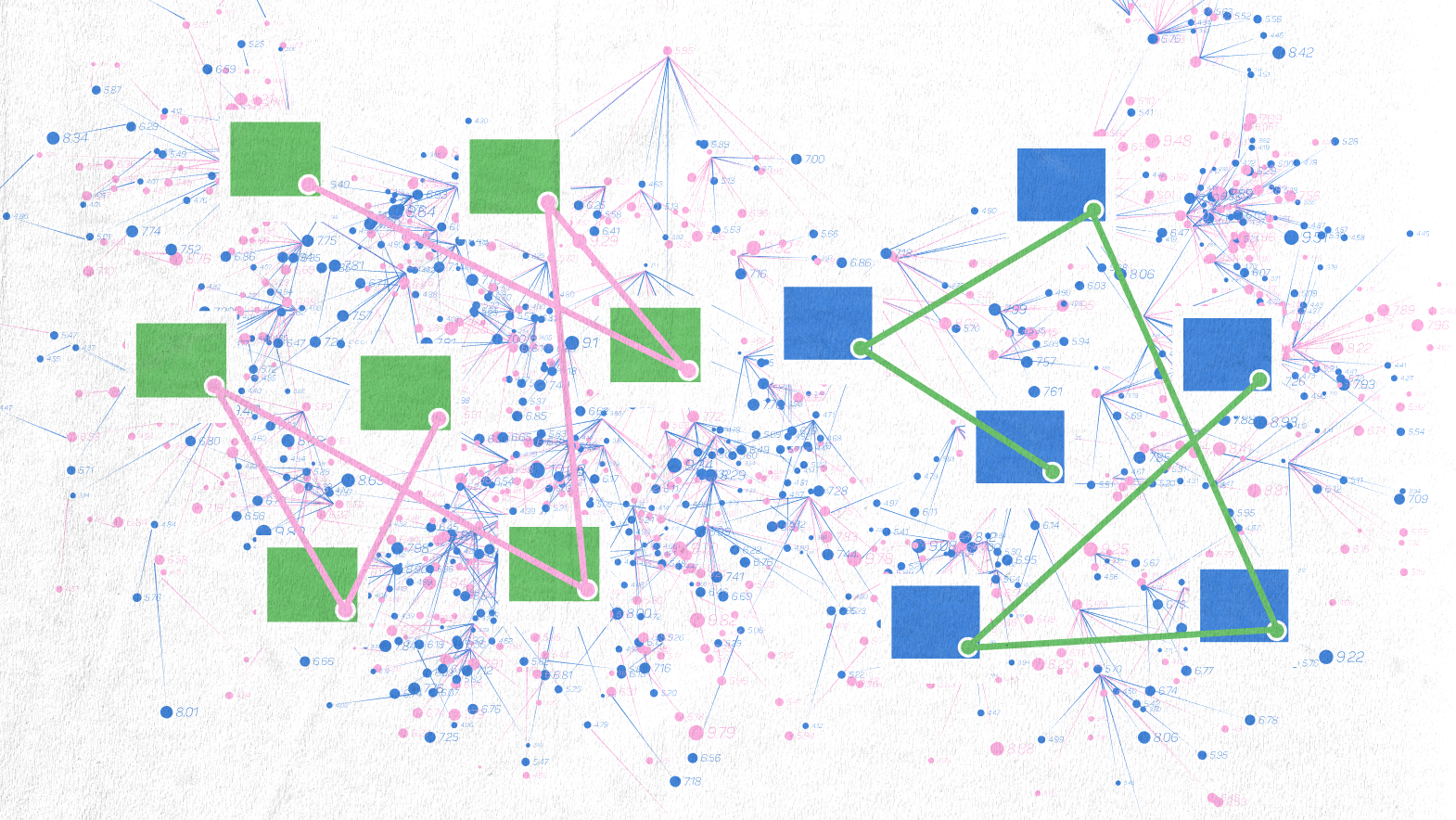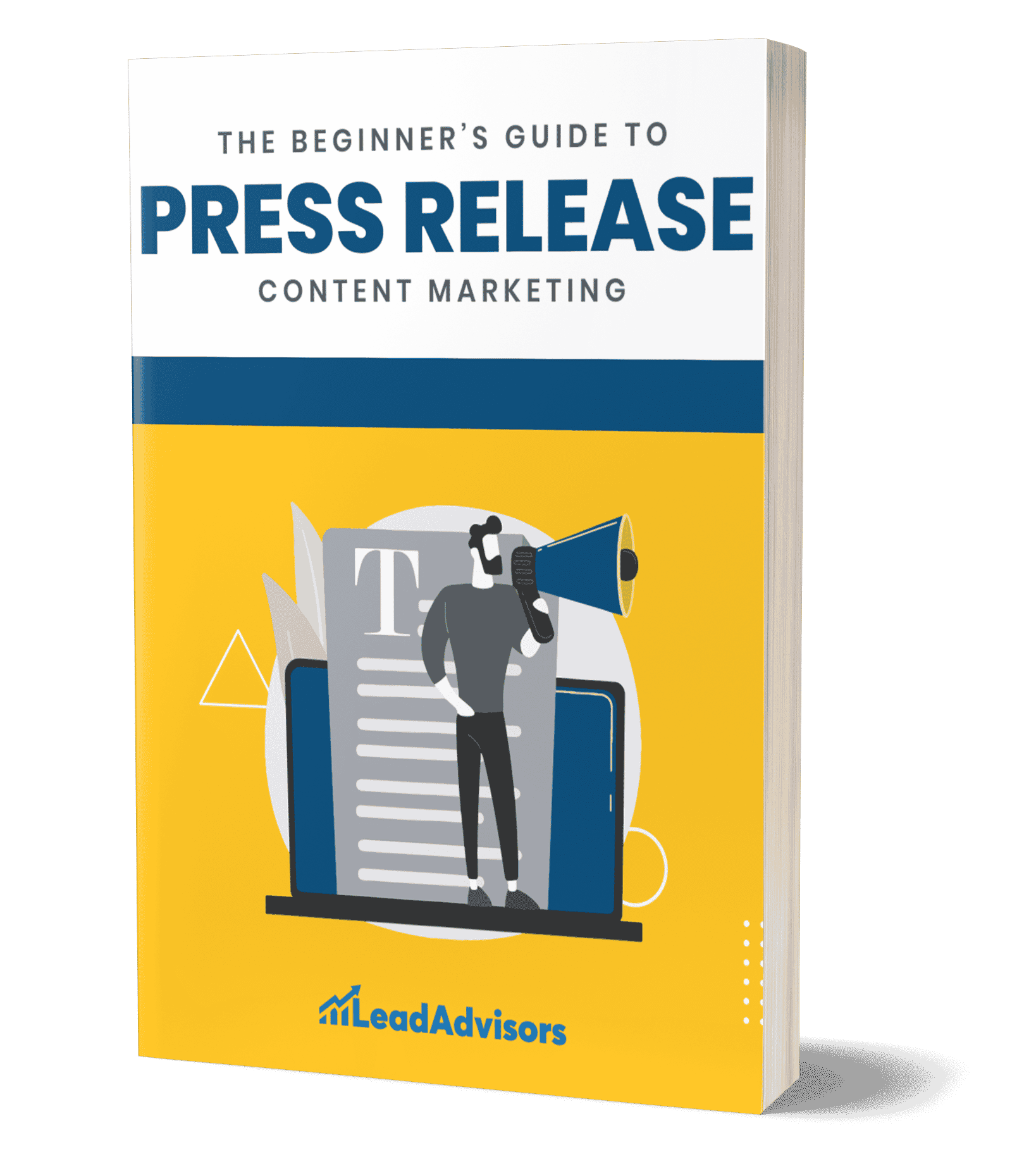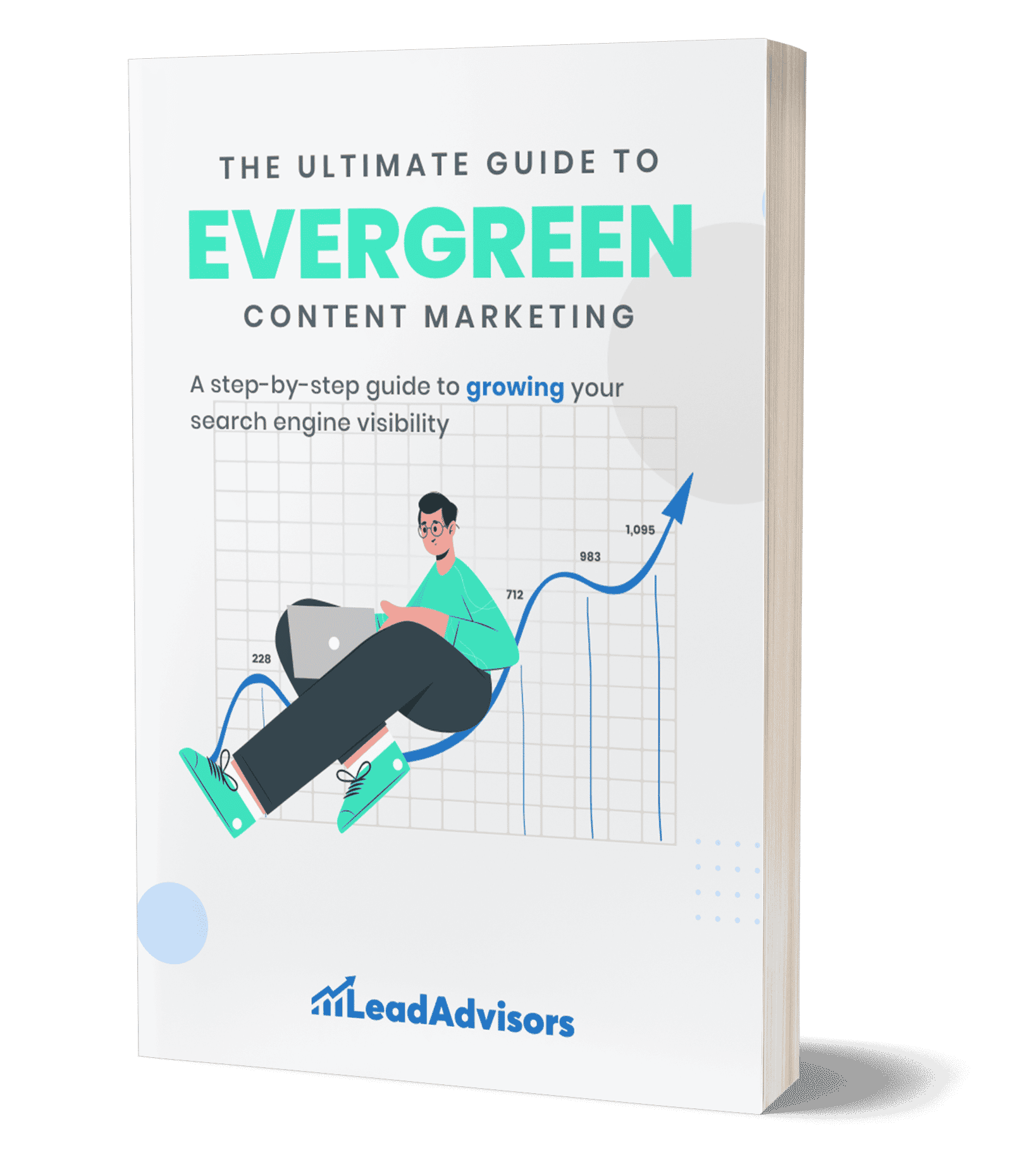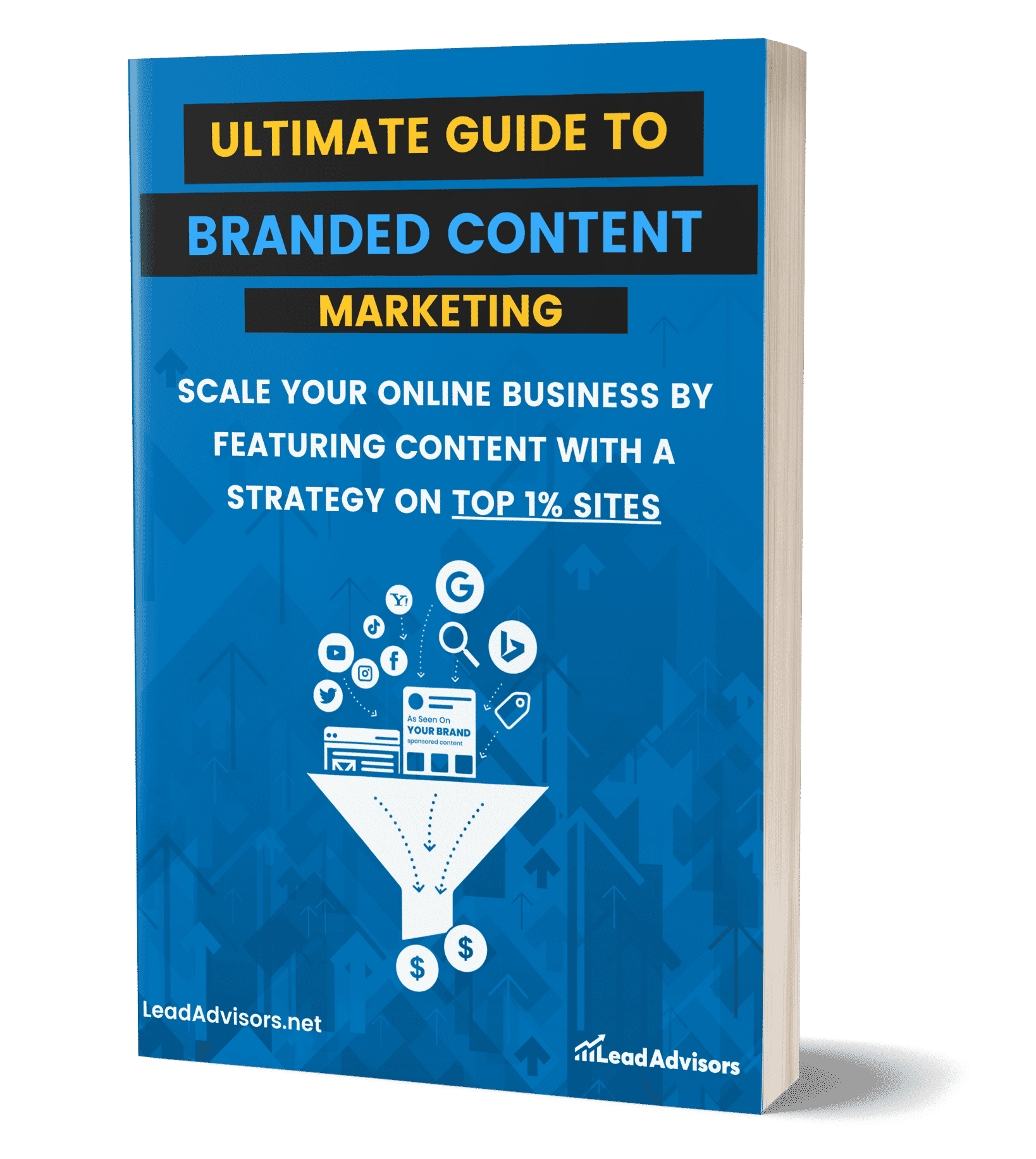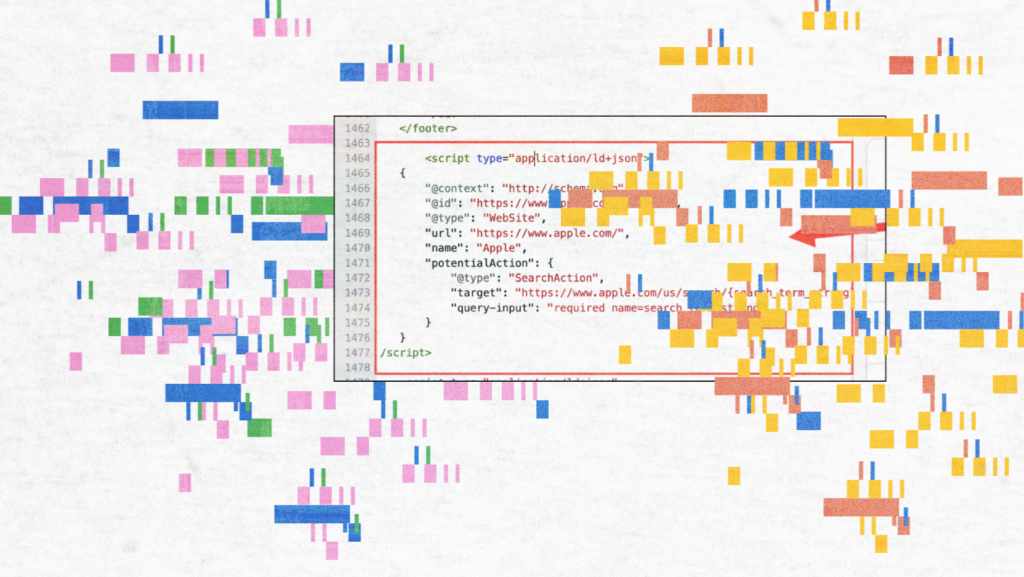pLink Equity is the transferable SEO value that flows through hyperlinks. Often called link juice, it signals trust and relevance to a search engine and still shapes which pages surface in competitive search results. Despite AI overviews and zero-click formats, industry reporting shows that authoritative linking remains a strong indicator of visibility and crawl priority.
In this guide, you will learn how link equity flows across your site, what strengthens or weakens it, and how to build and distribute it for durable gains. We’ll cover internal links, external acquisition, technical safeguards, and smart measurement so you can allocate equity to the pages that matter most. The goal is practical, evidence-led steps you can implement to improve rankings and user value while protecting long-term credibility.
TL;DR: Building Link Equity in 2026
- Link equity (aka link juice) still drives SEO visibility – even in the AI and zero-click era.
- Authoritative, contextual links remain one of Google’s strongest ranking signals.
- Internal linking distributes value efficiently across your site, while external backlinks bring new authority in.
- Technical precision, clean redirects, crawlable HTML, consistent canonicals, protects link value from leakage.
- Focus on earning credible mentions, auditing link flow quarterly, and measuring equity with DA/DR and referring domains.
- Treat link equity as a compounding asset, not a one-time win. Build, distribute, and protect it for long-term SEO growth.
Understanding Link Equity and Why It Still Matters
Link equity, sometimes called link juice, is the SEO value a linking page transfers to a target page through crawlable hyperlinks. In practice, link juice flows through internal links and external links and helps a search engine evaluate relevance and trust.
More link equity contributes to ranking signals, faster indexing, stronger page authority, and broader topical authority. It supports search engine optimization by helping search engines understand how your content connects and which URLs deserve more visibility.
Why it still matters.
- Strong correlations between authoritative links, featured snippets, AI overviews, and passage-level surfacing in search results.
- Credible links establish source trust, which influences how AI systems select citations and how users judge expertise.
- Equity helps crawlers prioritize discovery, so important pages get found and refreshed more often.
Key takeaway. It is a core currency of trust. If you distribute it intentionally across the same website, you pass link juice to the right targets and sustain durable visibility.
Link Equity vs PageRank: What’s Changed and What Hasn’t
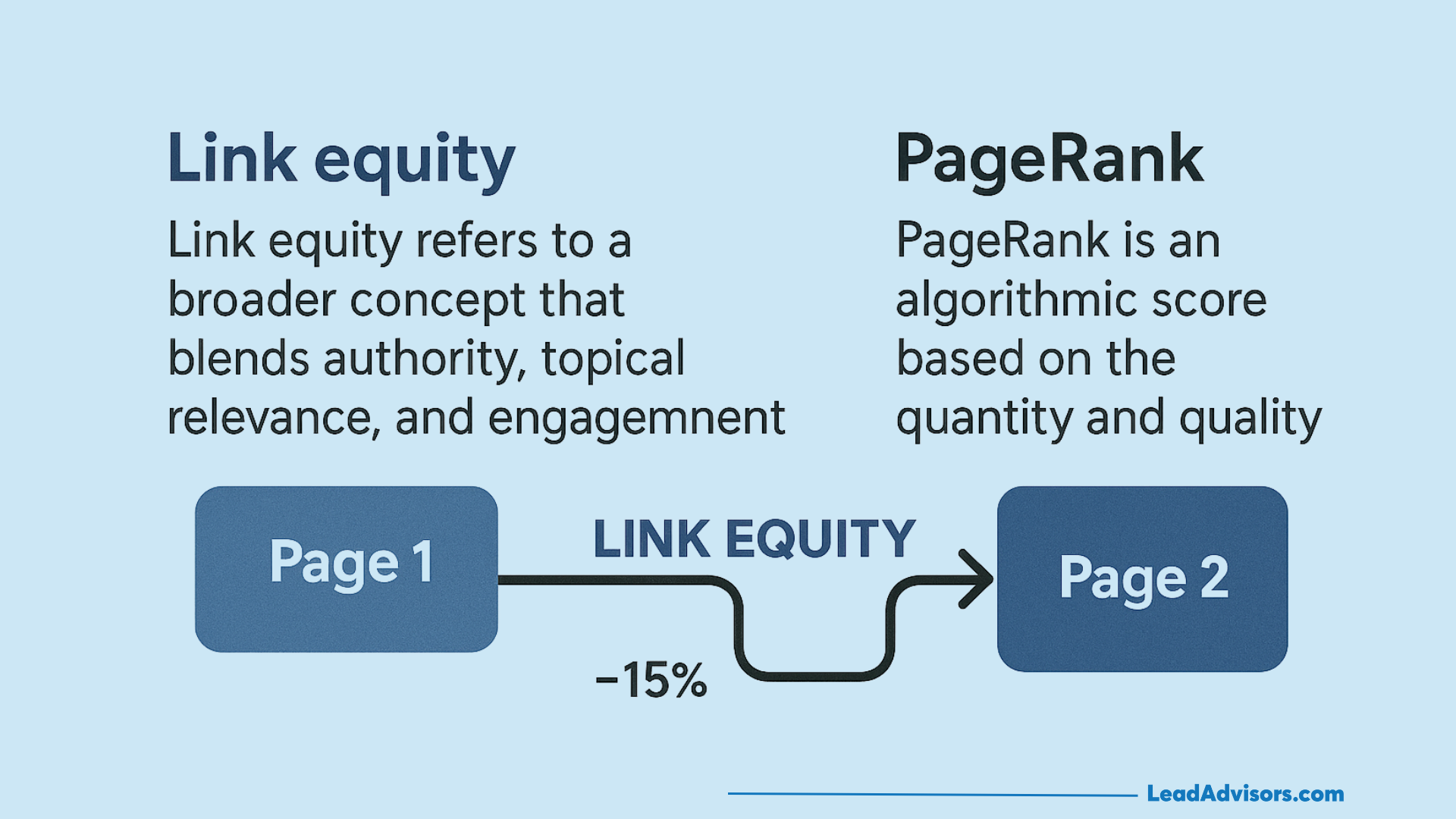
PageRank began as Google’s link-based scoring system. It estimated how much equity a page could pass based on the quantity and quality of links pointing to it. More link equity meant higher potential visibility in a search engine.
PageRank still matters, but it is one signal among hundreds. Search engine optimization now evaluates content quality, intent match, site’s structure, and user experience alongside classic link signals.
Link juice refers to a broader concept than a single score. It blends authority, topical relevance, and engagement. The link value of a particular link depends on the linking page’s authority, the linked page’s content, and technical accessibility. Clear architecture and smart internal links help distribute more equity to important pages.
In practical models, some equity dissipates with each hop. Many workflows assume roughly 10 to 15 percent loss per link hop, so more hops can mean less link juice passed.
PageRank is an algorithmic score. Link equity is the conceptual flow of SEO value across your site.
How Link Equity Actually Flows Between Pages
Link juice flows through every crawlable hyperlink. The mix of internal and external links, the number of links on the page, and your link placement choices determine how much value reaches each target page. Get these basics right so search engines understand your priorities while you’re distributing it efficiently.
Flow mechanics
A linking page holds a finite pool of value that gets split across its outlinks. As outbound links increase, each link receives less value. Keep navigation lean, emphasize contextual links, and use relevant anchor text so you consistently pass link juice to the right destinations.
Internal vs. external flow
External links introduce new authority to your domain. Internal links route that authority where it matters most. Build clear paths from high-authority entries to product pages, hubs, and fresh blog posts so one page can help other pages perform better.
Crawlability requirements
Only crawlable, indexable HTML links transfer value. Prefer standard anchors and dofollow links. Avoid JS-only navigation, blocked resources, and broken links, since they interrupt flow and waste opportunity.
Waterfall model
Picture a cascade that starts on high-authority pages, pours into category hubs, then reaches deeper assets. With thoughtful link placement, balanced links on the page, and concise anchors, you effectively distribute link juice without loss.
Factors That Determine Link Equity Transfer
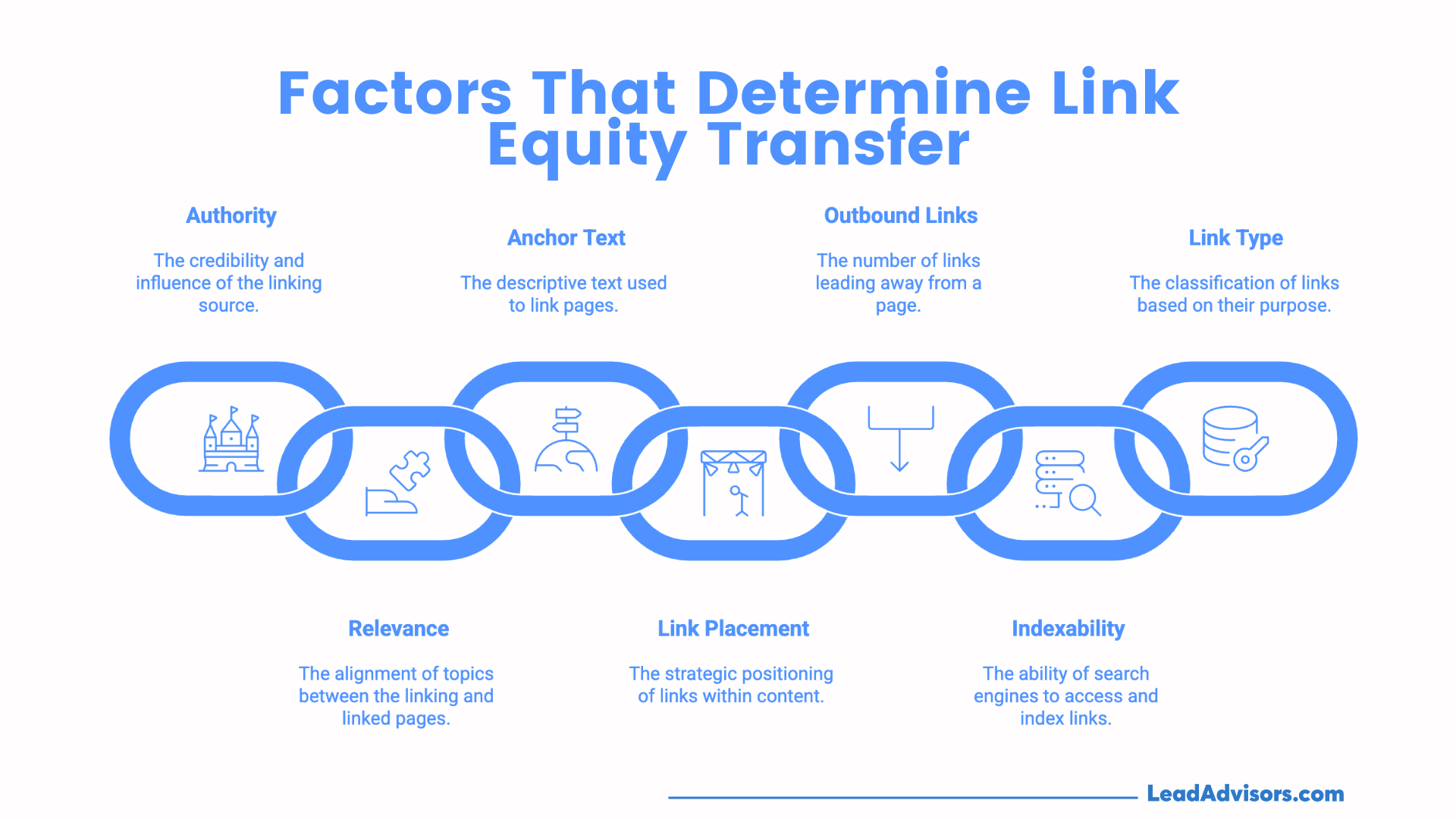
Strong links pass more value when they are authoritative, relevant, clearly described, well placed, and technically accessible. These elements determine, affect, and control your overall distribution.
Authority of the linking page and domain
The authority of the linking source sets the ceiling for value. Check Domain Authority or Domain Rating to estimate the linking page’s authority. Links from authoritative sites and other authoritative websites tend to pass link juice more reliably. Use Moz, Ahrefs, or MarketBrew’s Link Flow Share to size the impact from each linking page.
Relevance and context
Equity flows further when topics align. Contextual links embedded in relevant content give more value than off-topic mentions. Prioritize relevant links from pages that naturally support the target.
Anchor text
Clear, descriptive anchor text helps search engines understand the linked page’s content. Vary anchors across exact, partial, branded, and long-tail so search engines understand intent without patterns that could depress search engine rankings.
Link placement
Editorial, in-body placements carry more weight than sidebar or footer. Early link placement within the main copy can improve engagement, signaling that the link appears in a meaningful context.
Number of outbound links
Equity is finite. As the number of links grows, each receives less. Keep outbound links focused and prune low-value references to protect valuable link equity and ensure high-quality links get a larger share.
Indexability and technical factors
Only accessible links move equity. Use plain HTML and ensure the source page is indexable. Broken links stall flow and affect equity, so fix them quickly. Favor dofollow links for transfer and apply rel attributes thoughtfully.
Link type: follow, nofollow, sponsored, UGC
Dofollow links usually transmit more value. Nofollow links, sponsored, and UGC are treated as hints, so keep a natural mix without trying to sculpt aggressively. The goal is steady, defensible distribution.
How Redirects, Canonicals, and Technical SEO Affect Link Equity
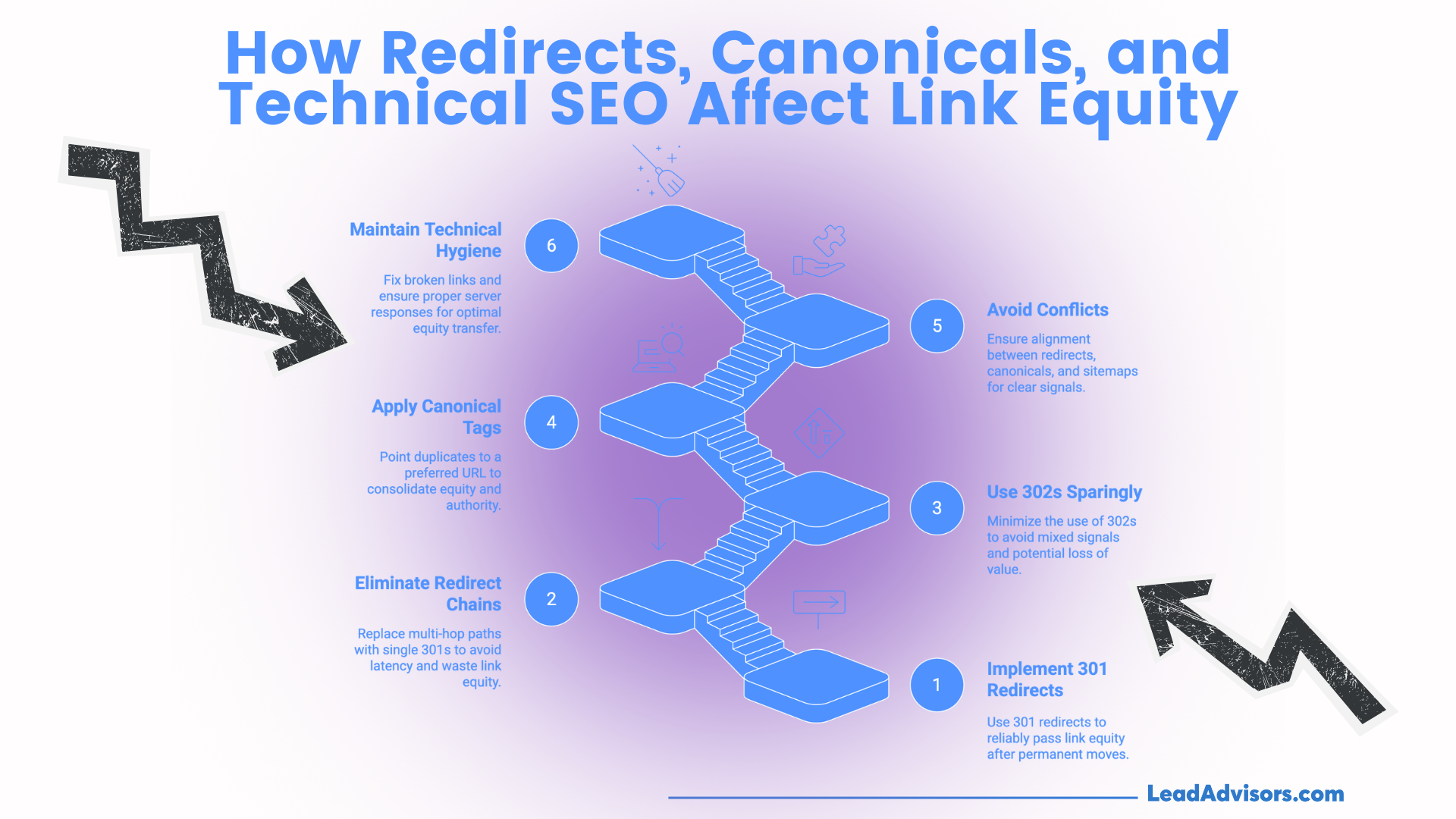
Routing choices decide how much link juice reaches your preferred URL. Clean, consistent signals help search engines understand intent, preserve the link juice passed, and prevent configuration errors that affect it. Use the checklist below to protect the distribution, minimize leakage, and make issues easy to measure and fix.
- 301 redirects: Preserve ~90–99% of value and reliably pass link juice after permanent moves. Map one-to-one and update links where possible.
- Redirect chains: Replace multi-hop paths with a single 301 to avoid latency and waste link equity.
- 302s and temporary redirects: Use sparingly. Long-lived 302s can send mixed signals and may pass less value.
- Canonical tags: Point duplicates to a preferred URL so one page accrues more equity and page authority. Ensure the target is indexable.
- Avoid conflicts: Keep 301 targets, canonicals, hreflang, and sitemaps aligned so search engines understand the destination and you can measure link juice accurately.
- Technical hygiene: Fix broken links, remove accidental noindex on sources, prefer HTML anchors over JS-only links, and confirm server responses are 200 for pages meant to carry equity.
Internal Linking: The Engine of Link Equity Distribution
Effective internal linking strategies help with distributing link equity across the same website, so important pages earn visibility. Thoughtful paths, clean site structure, and concise anchor text guide crawlers and users, improving discovery and conversions.
Why internal linking matters
Internal links spread external authority across your domain and show how topics connect. Clear paths from navigation to blog posts and product or service URLs help new pages get indexed faster and earn more value from the links already pointing to your site.
Building a strategic internal linking system
- Hub and spoke or silo structures:
- Hubs target broad topics.
- Spokes cover subtopics that point back to the hub.
- Contextual, reciprocal links keep equity circulating within clusters.
- Tiered internal linking:
- Tier 1: Homepage and high-value conversions.
- Tier 2: Hubs and categories.
- Tier 3: Articles, tools, and guides.
- Click depth rule: Keep priority URLs within three clicks of the homepage.
- Path hygiene: Limit unnecessary links on the page so the number of links does not dilute the value.
- Automation: Use AI suggestions to surface missed connections and reinforce cluster integrity.
Optimizing anchor text internally
Write relevant anchor text that matches the target page’s intent. Mix exact, partial, branded, and long tail anchors to avoid patterns. Favor editorial placements with clean HTML and dofollow links so the signal is easy for crawlers to interpret.
Maintenance and auditing
Run routine crawls to find and fix broken links and to surface orphaned pages that need entry points. Remove unnecessary nofollow on internal paths meant to transfer value. When content changes, update links so equity keeps flowing to the right targets without leaking through outdated paths.
Building Link Equity Through External Backlinks
External links bring new authority into your site. When authoritative websites cite your work with relevant links, they pass link juice that your internal paths can distribute. Prioritize high-quality backlinks from credible sources, then route that value to important pages with clean anchors and clear paths so search engines understand which URLs deserve visibility.
Why external links still dominate
An earned mention from a trusted linking site is a public vote that your content is worth referencing. In modern link building, sheer volume matters less than quality and diversity. A smaller set of editorial, context-rich citations compounds faster and supports stable search engine rankings.
Characteristics of high-equity backlinks
- From authoritative, niche-relevant domains with observable domain authority
- Contextual placement in the main copy where the link appears naturally
- Dofollow links, live and stable, not broken links or expired pages
- More unique root domains instead of repeats from the same source
Strategies to earn link equity
- Guest posting: Target publications your audience reads and contribute material that adds value.
- Digital PR and press releases: Secure editorial mentions that place links pointing to your best resources.
- Linkable assets: Publish data studies, tools, or visuals that attract organic links for SEO.
- Broken link outreach: Help webmasters fix broken links by offering a better replacement.
- Influencer collaborations and thought leadership: Share expert takes that attract natural citations.
Diversifying your backlink profile
Mix root domains, anchor text types, and link attributes. A healthy profile includes dofollow links alongside a reasonable share of nofollow links. Avoid manipulative exchanges. The aim is durable equity that strengthens pages over time and supports ongoing link-building efforts.
Common Link Equity Mistakes That Harm Rankings
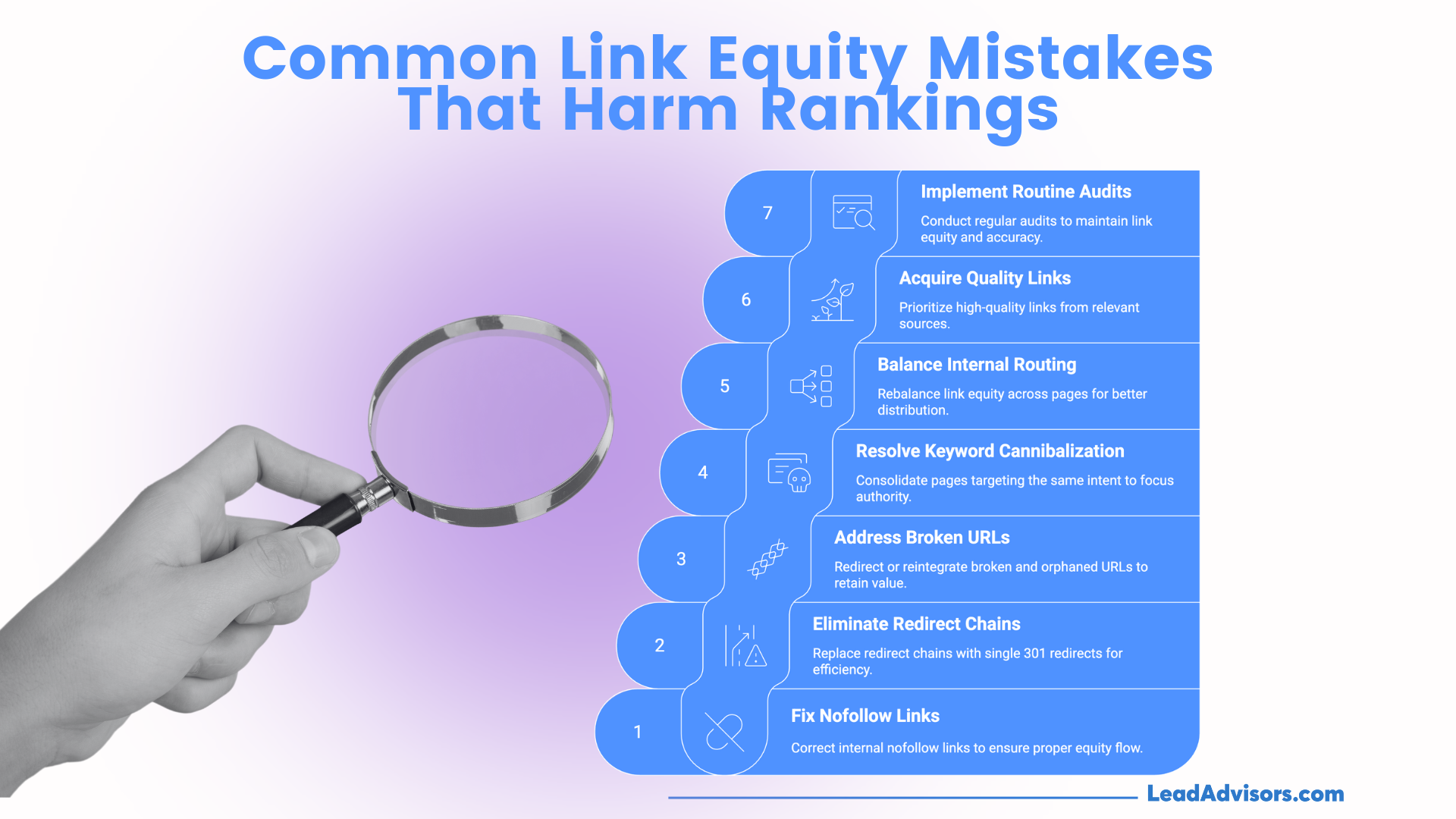
Small missteps can quietly drain more link equity and stall search engine rankings. Audit these patterns and fix them early so equity reaches the important pages instead of leaking across other pages.
- Nofollow on internal paths
Excessive nofollow links inside your site interrupt the flow and weaken link juice distribution. Use the following links for navigation and key contextual references. - Redirect chains and loops
Multiple hops dilute signals and slow crawlers. Replace chains with a single 301 to avoid waste link building equity and preserve crawl budget. - Broken and orphaned URLs
Broken links and pages without internal entry points trap value. Redirect or reintegrate them with links you can monitor and maintain. - Keyword cannibalization
Several URLs targeting the same intent divide authority. Consolidate into one page with the strongest topical match and redirect weak variants. - Lopsided internal routing
Equity clustered on a few URLs leaves growth areas underpowered. Rebalance with contextual links from strong hubs to new or underlinked assets. - Low-quality link acquisition
Buying links or trading irrelevant placements adds noise without more value. Prioritize high-quality links from relevant sources. - Set-and-forget governance
Skipping routine audits lets issues persist. Crawl quarterly to measure link equity proxies, repair errors, and confirm anchors and paths remain accurate.
Measuring and Tracking Link Equity
![]()
You cannot measure link equity directly, so use a consistent proxy stack and trend it over time. Triangulate authority, coverage, and performance to understand how link equity flows and whether your link juice distribution supports priority URLs.
- Authority proxies: Domain Authority or Domain Rating, plus Page Authority or URL Rating on key targets.
- Backlink health: Referring domains, new vs lost links, and the quality of links pointing from authoritative sites.
- Crawlability: Crawl depth, index coverage, and discovery timing for new blog posts and sections.
- Performance: Impressions, clicks, and positions for target pages in search results, plus referral traffic in GSC and Analytics.
Tools. Moz, Ahrefs, and Semrush for authority and backlink audits; MarketBrew for Link Flow Share modeling; Screaming Frog for technical crawls and internal routing checks.
Auditing cadence. Review quarterly for lost links, redirect integrity, and internal flow balance. Annotate site changes, refresh links to high-intent pages, and watch search engine rankings for lift.
Link Equity in the AI and Zero-Click Search Era
In AI-shaped SERPs, link equity is still the currency that buys visibility. AI Overviews and related search results tend to cite trusted pages, which means earning authority through external links and routing it with internal links remains essential. Focus on quality citations, clean tech, and clear topical signals so your best pages are eligible for inclusion even when clicks are scarce.
- Link building equity remains crucial for visibility in AI-powered SERPs, where overviews and related results cite trusted, authoritative pages, highlighting the importance of external backlinks and internal linking to boost authority.
- AI systems use trusted, linked sources, so accumulating link juice from authoritative sites sends strong credibility signals, increasing the chance that content will be cited in AI answers and related search results.
- Pages ranking well due to strong domain authority, page authority, and topical relevance become safer citations; focused link building and links strategically funnel equity to priority pages to enhance this effect.
- Quality beats quantity: contextual links from trusted, relevant domains with descriptive anchor text outperform bulk weak links. A Moz Link Explorer study of 27,000 queries shows how much links still matter as a ranking factor.
- Zero-click searches raise the visibility bar as users get answers without clicking; therefore, placing link equity toward hub pages, product pages, and comprehensive guides helps those URLs surface in AI overviews and SERPs.
- Internal linking supports external link acquisition by routing earned authority efficiently; maintain shallow site architecture, limit outbound links in navigation-heavy areas, and optimize anchor text for effective equity distribution.
- Technical SEO clarity – resolving redirect chains, fixing broken links, and ensuring proper canonicalization – ensures link juice flows cleanly and link relationships are understandable by crawlers and AI.
- Track metrics such as referring domains, domain authority/rating, and impressions to measure impact; improve underperforming pages by enhancing content, adding supporting sources, and securing additional quality backlinks.
Advanced Tactics for Maximizing Link Equity
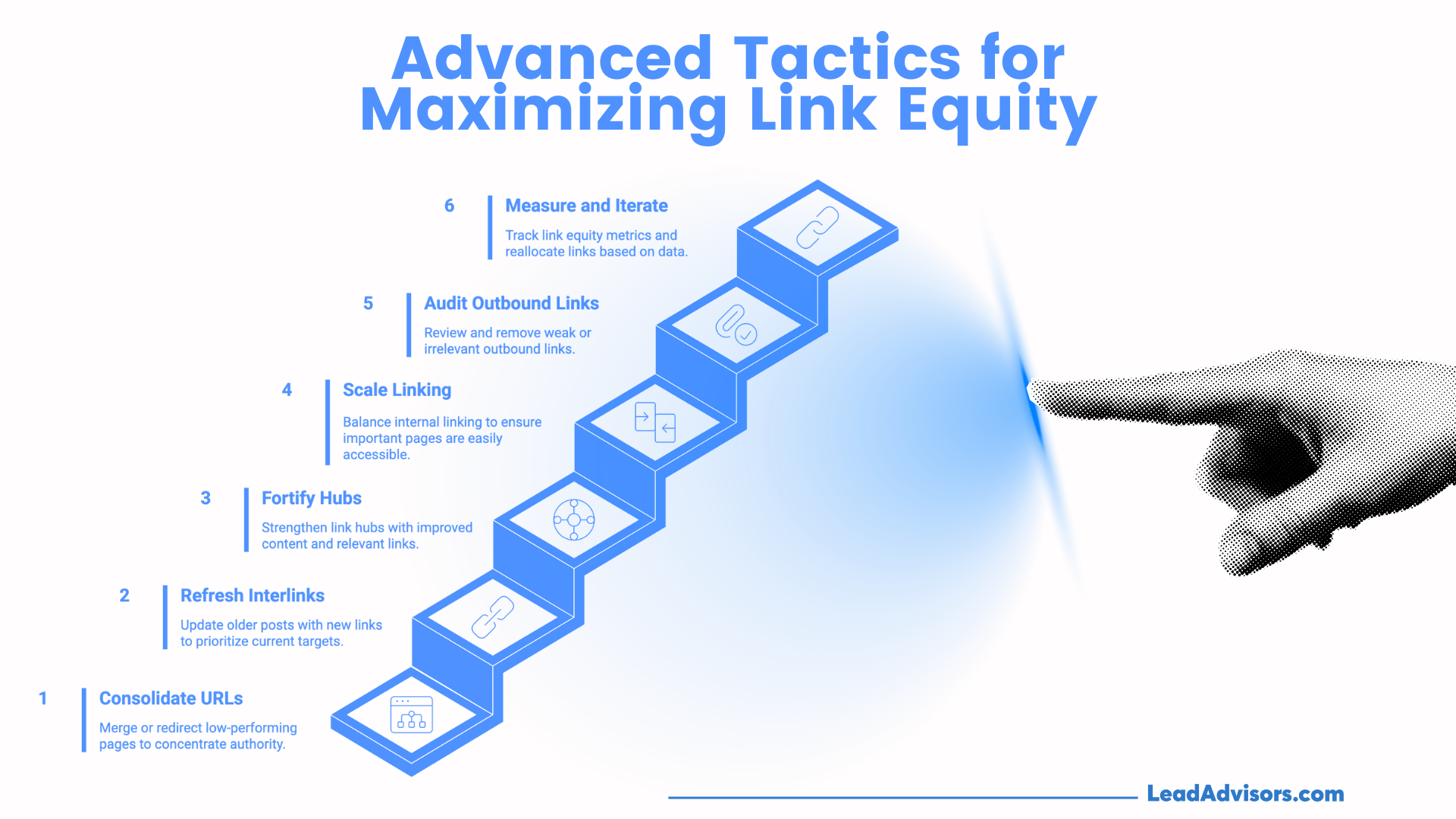
Use these plays to maximize link equity, improve distribution, and protect the link value you have already earned.
- Consolidate weak URLs. Merge or redirect low-performing pages to stronger targets with clear canonicals to concentrate page authority and pass link equity cleanly.
- Refresh and interlink. Update older blog posts with new contextual links to priority pages so links route more equity to current targets.
- Find and fortify hubs. Use analytics to identify link hubs that attract referrals, then strengthen them with improved content and additional relevant links.
- Scale linking thoughtfully. Apply scale down or scale up internal linking to balance clusters, ensuring important pages are within shallow click depth.
- Audit outbound links. Review outbound links regularly and remove or replace weak or irrelevant destinations so you do not leak valuable link equity.
- Measure and iterate. Track proxies to measure link-building equity, including referring domains, page authority, crawl depth, and performance, then reallocate links based on the data.
Building Sustainable Link Equity for Long-Term SEO
Treat equity as a compounding asset. Earn new authority with high-quality backlinks, route it with links, and protect it with clean tech so link equity distribution strengthens the whole site over time.
- Create content worth linking to: publish valuable content such as unique datasets, case studies, tools, or expert guides that attract contextual links from authoritative sites.
- Audit link flow regularly: map top referrers, find underlinked assets, fix broken links, and update anchors so you effectively distribute to priority pages.
- Combine link building with on-page excellence: align fast pages, clear the site’s structure, and helpful UX with targeted link building so signals reinforce each other.
- Think compounding, not instant: equity accrues and redistributes through your network of URLs. Monitor DA/DR, referring domains, and page performance to measure link juice proxies and reallocate links as opportunities evolve.
Frequently Asked Questions
Can link juice be lost during a website migration or redesign?
Does link equity influence how quickly Google indexes new pages?
How does link equity impact featured snippets and AI search results?
Is it possible to transfer link juice between domains?
How often should you audit your website’s link juice distribution?
Conclusion
Link equity is still the core currency of trust on the web. When you earn authority with high-quality internal and external links, route it with purposeful internal links, and safeguard it with clean technical SEO, you build durable visibility across competitive search results. Focus on content that deserves citations, clear anchor text, and a site’s structure that keeps important pages within reach so distribution is efficient.
Protect what you earn by fixing broken links, aligning redirects and canonicals, and trimming noisy outbound links that do not add value. Then measure link equity with reliable proxies like DA/DR, page authority, referring domains, crawl depth, and performance. The playbook is steady and compounding.
Acquire credible mentions, distribute equity to the right targets, and refine your paths as data comes in. Start today by auditing your top-linked pages and patching the leaks so your next gains in link juice move the entire site forward.

